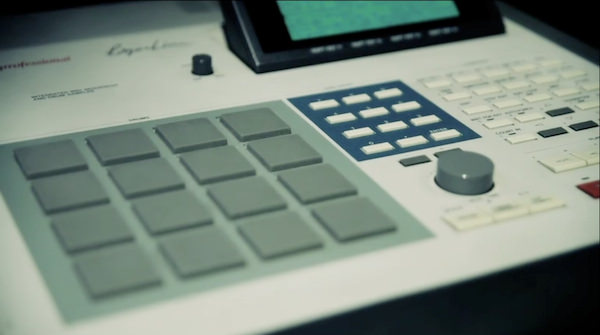In the latest Beat Dissected we get back to percussive basics with this pan-genre shaker pattern.
Beat Dissected is a regular series in which we deconstruct drum patterns, showing you how to recreate them in any DAW. Just copy our grid in your own software to recreate the loop.
Here’s the beat we’re building today:
To download the samples for this beat, click here. The samples are provided on a completely royalty-free basis. They may not be sold or given away, either in whole or in part.
You must register for a free Attack account and sign up to receive our newsletter in order to download the samples. New members can register here. Existing members can log in here.
Spec
Tempo
110-140Swing
50-80%Sounds
real shaker samplesStep 1
OK, let’s get this out the way at the very top: if you want a truly realistic shaker line then you’re best off getting out your microphone or finding a decent sample of the real thing. That said, there can be good reasons for programming your own: you get greater control over the rhythm and the raw sound; you can get some very nice organic/synthetic hybrids; and finally, it’s a challenge, and the Beats Dissected team love a challenge. So here goes…
The first fundamental ingredient in a realistic shaker line is dynamic variation; you won’t get a groove going unless there’s a clear contrast between the louder and softer hits, so ensure that the shaker volume responds to velocity when setting up the sampler.
Start by programming this 2-bar rhythm pattern, adjusting the velocities as pictured (darker red means louder hits – click to expand the image for greater detail). The louder hits fall on the off-beats. It’s an OK start, but with the hits quantised to the rigid 1/16th grid, it sounds a little sterile.
Step 2
The second key ingredient in a realistic percussive groove is hit placement, and specifically, the subtle shifting of hits to create something more funky and human. Below you can see how we’ve eased some of the notes slightly off-grid so the pattern begins to lose its rigidity. Some of the note lengths have also been adjusted to bestow a further taste of imperfect humanity. Although you can follow the example below to the letter, experimentation is key – especially if you’re working your shaker line to fit over the top of one of your own beats.
It’s important to note the relationship between the hit position and its velocity: each has an intrinsic impact on the other, and on surrounding hits too. As a consequence, it’s not unusual to lose an hour or so in a tweak frenzy before you get something that grooves just right.
Step 3
The final touch is to add a second shaker sample to the sequence, in this instance a slightly higher pitched variation of the first sample. This is placed on the off-beat to further reinforce the swing, the different pitch adding a little more energy and variation to the line.
As far as processing goes, approach this in a similar way to a real shaker line, adding a touch of reverb or a gentle halo of delay. To widen the image you might try panning the first sample a little to the left and the second to the right. Very subtle stereo widening can also introduce extra depth and movement.



